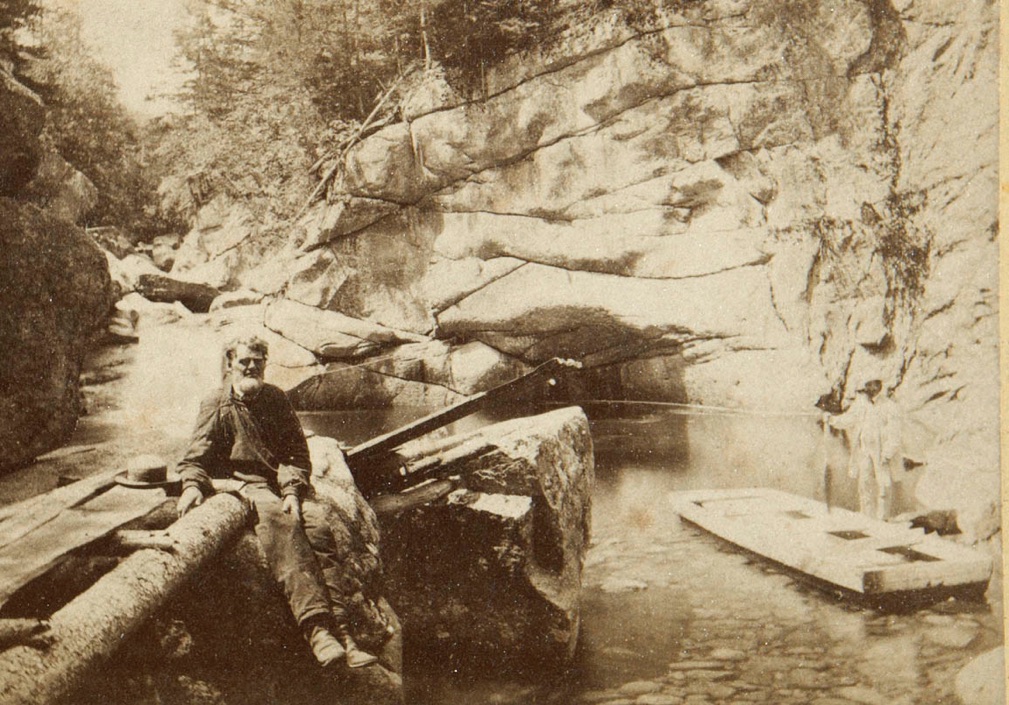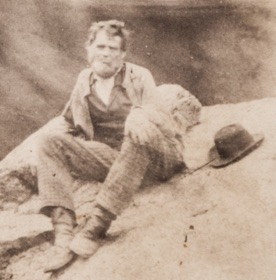The Pool
in stereoview photography
Franconia, New Hampshire
1853-1887

The Pool
in stereoview photography
Franconia, New Hampshire
1853-1887
A quick dash to the Pool, and the extraordinary, very 19th century madness of John Merrill, who lived at the White Mountain pool for four decades giving “rides” over its small expanse.
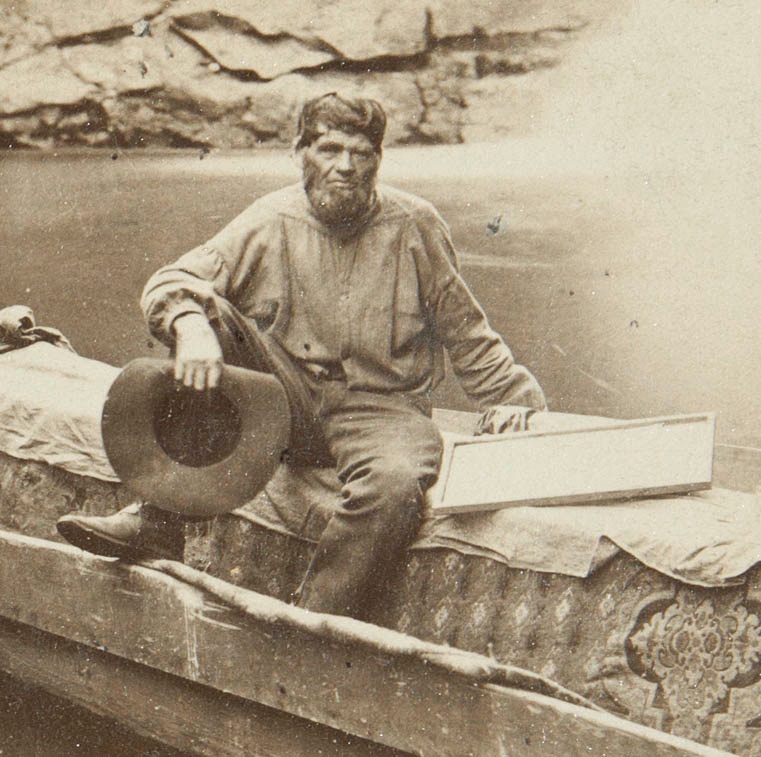
The development of this little spot lines up nicely with the beginnings of photography, especially the tourist oriented collectible format known as the stereoview. Never mind that the cards, about 3 1/2 by 7 inches, are more 3D than Avatar (they really are). They are photographic windows to another era, one not well documented in larger sizes or by amateurs.
I’m a photo historian, and what piques my interest here is how these incidental-seeming photographs offer a look into this new phenomenon of the American tourist. Niagara Falls was just being developed, as were the Catskills and accessible parts of Maine. All of these areas were “explored,” east of the Mississippi, but there was a lag between exploration and tourism, a few years at least, sometimes decades.
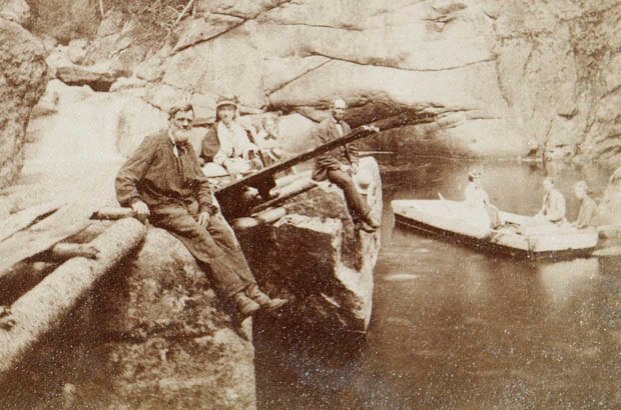
Merrill and an extended trouist group, from a Kilburn Bros. card c. 1872.
Nearby the Pool, which is really just a pretty, dark spot of water with a small waterfall running into it, was the Flume, and near to that were stage lines, and later the rail lines. Today you can get to both by car, in a jiffy, but you’ll still have to walk a few minutes in, just enough to shed a century or two in your head.
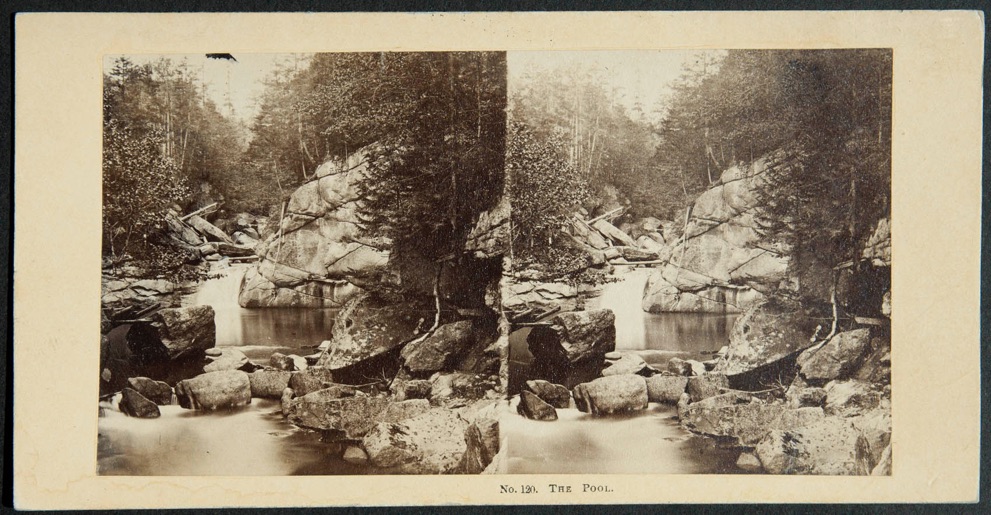
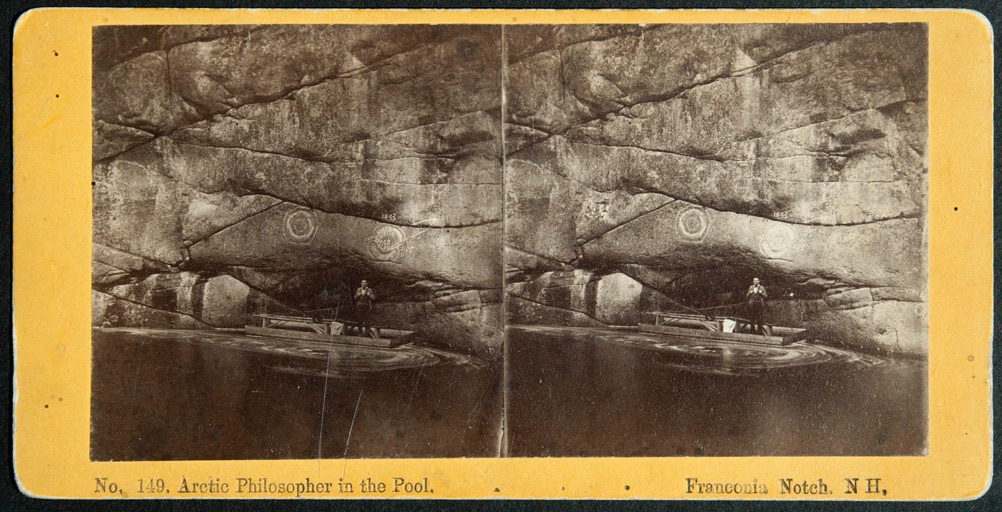
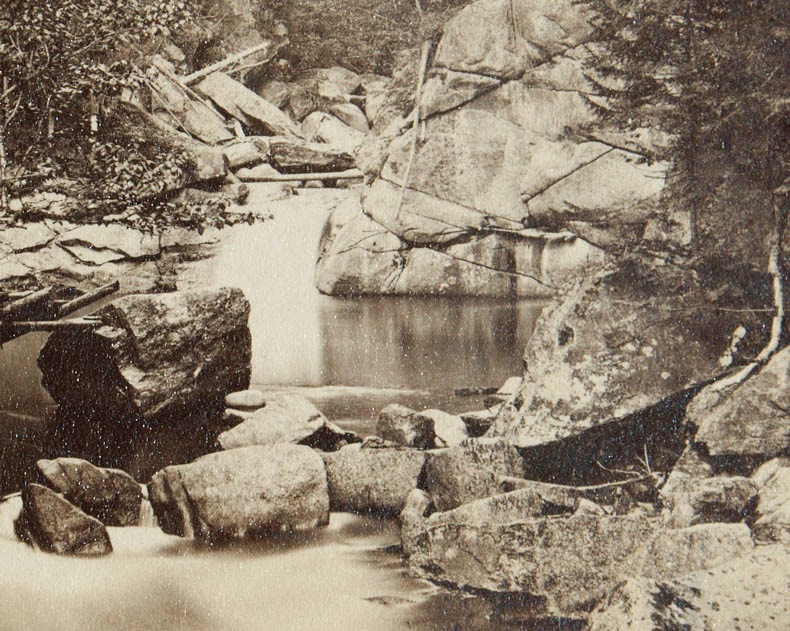
The scale of the site is deceptive--the boulders are large--but it’s mostly impressive for its dark, clear depth.

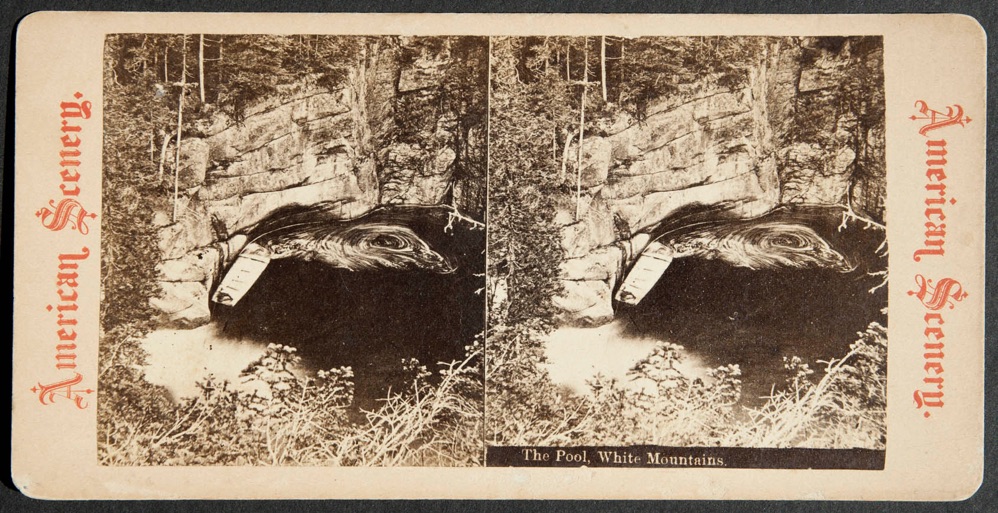
The photographers? Mostly regional tradesmen, artists at heart but generally struggling to make ends meet. The most famous was Albert Bierstadt, the gifted German immigrant who, with his two brothers, made up the early stereoview collaborative known as the Bierstadt Bros. They photographed Massachusetts and the White Mountains, before splintering (with some uncertain chronology) into three separate careers. Albert became the painter he is famous for, his brother Charles continued the stereography, and the third brother, Edward, moved into high end photographic printing (using a printing press).
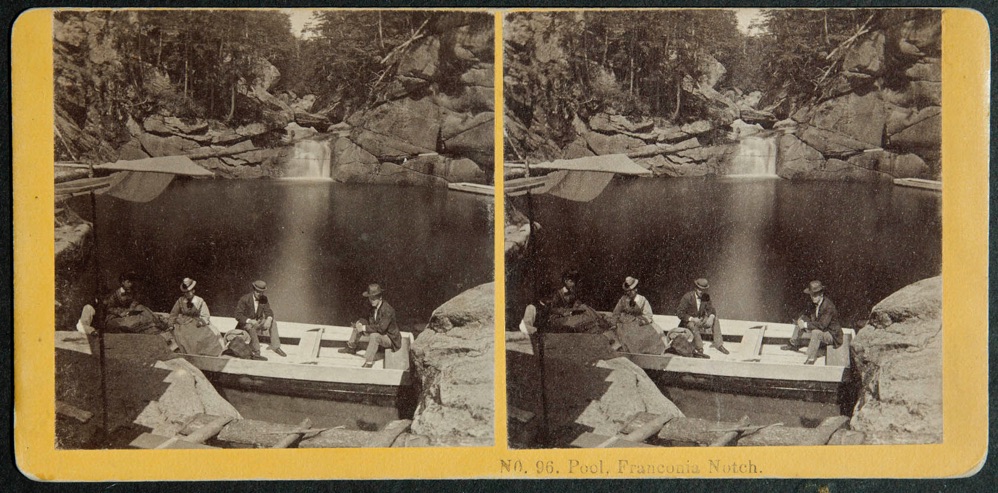
The most prolific photographer? This is a tie, I’d say. The Kilburn Bros photographed New Hampshire and beyond with obsessive and sometimes repetitive zeal, and they, from my knowledge, have the greatest number of different views. But a local man, the peculiar H.S. Fifield, lived nearby at the Flume every summer for years, just to make money photographing tourists during their brief visits (like tourist photographers still do now at some sites). He photographed the Pool frequently, though his Flume views seem to number in the 100s.
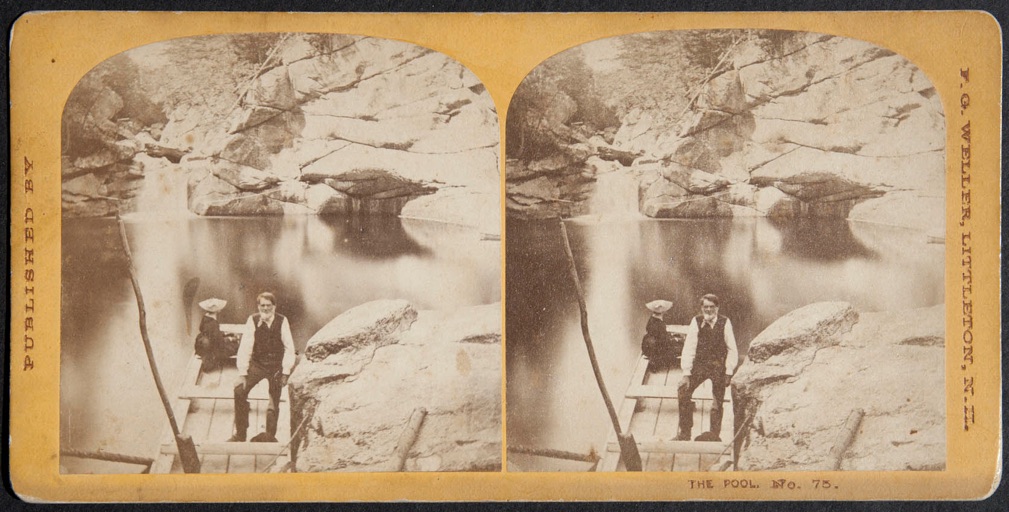
Why a web site on this trivia? As a kernel of verifiable truth (maybe). The borrowing or buying (or pirating) of negatives from one photographer to another can be looked at more clearly here by removing a lot of other variables. And each photographer’s particular format--both photographic style and printing and publishing method--is visible. The site even has the threat of being comprehensive. I’m guessing there are a hundred distinct views of the pool from 1850 to 1900, and I’ve just incidentally gathered half of them that include Merrill. A few appear on this page.
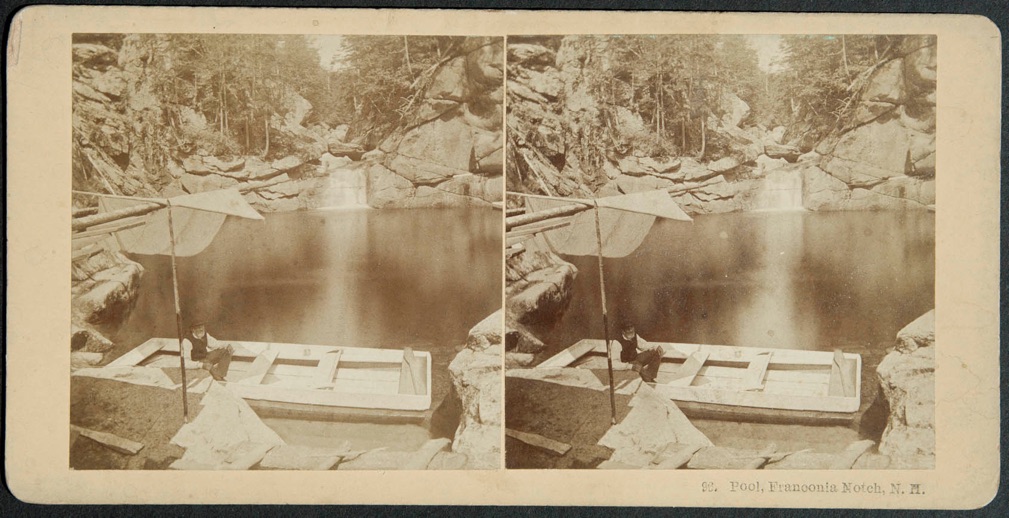
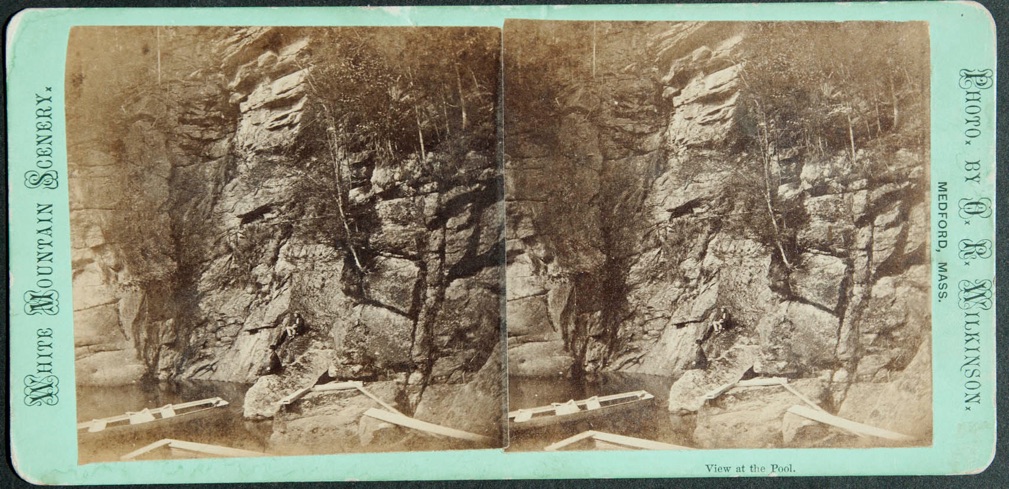
If you think you have a great view and are willing to send a nice scan or photograph, write me at wmjaeger@gmail.com. It’s a labor of love, nothing less, nothing more. And decidedly minor stuff. So give it a quick breeze and carry on.
